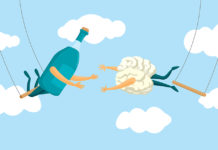Hospitalized patients who survive an opioid overdose provide critical moments for interventions, but a new study exposes a shortfall in salvaged opportunities for advocating addiction treatment.
In 2015, there were over 33,000 deadly overdoses linked to opioids in the U.S., according to the Centers for Disease Control and prevention, and for every one of those overdoses, there were about 30 nonfatal overdoses, the researchers noted.
“Every year there are roughly one million non-fatal overdoses that present a window of opportunity to intervene,” said lead author Julie Donohue, associate professor of health policy and management at the University of Pittsburgh. “The consequences of missing these opportunities are tens of thousands of deaths annually.”
The paper, published in the Journal of the American Medical Association, used data from the Medicaid claims of patients in Pennsylvania between 2008 and 2013, and it specifically looked at the rates of medication-assisted treatment (MAT) and prescription opioid use before and after their overdoses.
The researchers analyzed data collected from MAT numbers focusing on patients who had been medicated with either methadone, buprenorphine or naltrexone — all three are FDA-approved drugs used to treat opioid addiction.
Although the study did not address the reasons behind missed opportunities for drug and opioid use intervention, Donohue said it’s a “good subject for future research. To begin to address this issue, however, health systems need to increase capacity to initiate treatment for opioid addiction in emergency department and hospital settings, for example, by initiating treatment with buprenorphine before someone leaves the hospital after being treated for an overdose.”
The study also focused on the need to detect instances of overprescribing, an issue that is likewise underemphasized in hospital settings.
“A non-fatal overdose also creates an opportunity for providers to make adjustments to pain treatment [by] reducing opioid doses when appropriate,” Donohue said. “There are health systems that are acting on these opportunities, but our research indicates that much more work is needed.”
The researchers noticed that there was neither a decrease in approved opioid prescriptions or a noticeable increase in addiction treatment among those who had suffered an overdose.
For example, MAT — which is considered a very reliable approach to addiction treatment — increased by only 3.6 percent, and opioid prescriptions fell by only 3.5 percent among patients who overdosed on heroin.
Just 15 percent of those who survived a prescription opioid overdose and 33 percent of heroin overdose survivors were approved for… (continue reading)
















